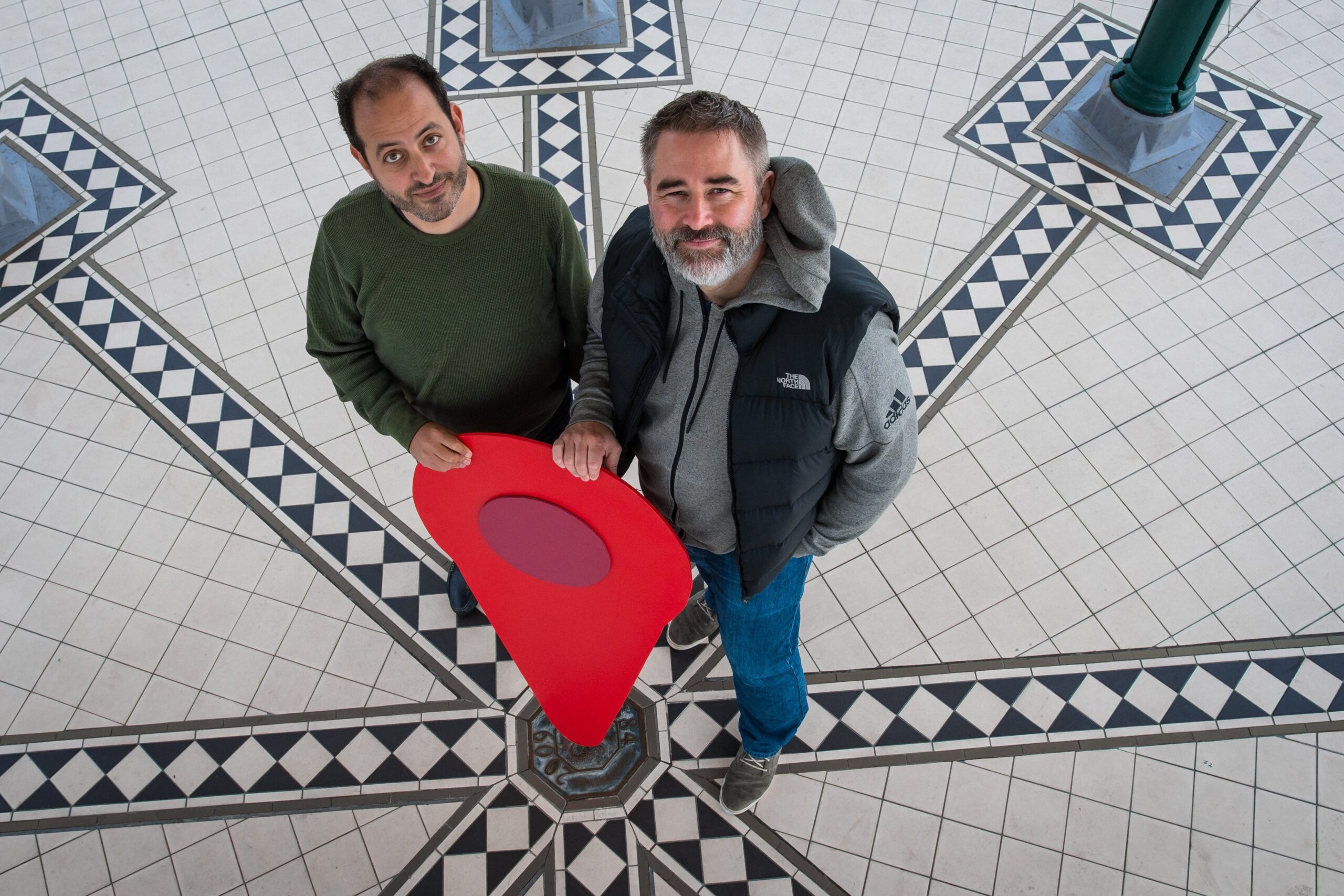In this series of interviews, we’re chatting to the brains behind some of the InsurTech businesses benefitting from our incubator – getting the low down on their offerings and the stories behind them.
To kick things off, we caught up with Jason Futers of Insurdata. Their exposure platform allows insurers – be they incumbents or innovative newcomers – to work with far more accurate property data. And as they’ve discovered, that’s something the industry sorely needs…
Jason you were once a footballer, while your partner Jeremy started his career at Microsoft. How did you end up working together in the insurance space?
There’s quite a winding timeline between our first jobs and the creation of Insurdata. My career had focused on insurance risk management technology, while Jeremy’s had focused on technology product development across a few industries.
Between us, the blend of experience in insurance, risk management and technology was all there. When our co-founder, Cory Isaacson, introduced us we immediately clicked and those different elements fell into place.
How did these experiences feed into the creation of Insurdata?
My experience in football taught me a lot about myself and definitely helped build courage and resilience. I played for some of the biggest football clubs in the country from the age of 12 and spent every summer training with international footballers.
Sometimes it’s not clear exactly how you’ll reach a goal, but if you keep making strides eventually you get there. As a kid, I dreamed of being a footballer and by 17 I was. That really gave me a belief in just how much you can achieve with the right motivation. That attitude – as well as our combined experience – has been really important in making Insurdata work.

We’re so used to hearing that data is the lifeblood of X or Y industry that it can sound a little banal, but in insurance it’s 100% true. You can’t price policies unless you understand the risk involved – and for that you need good data. So, whether it’s telematics in car insurance or wearable tech in health insurance, finding new ways of collecting good data is one of the biggest areas of innovation across the industry.
Your work revolves around threats to buildings. Now, you might have thought that if you know where a building is, what it’s made of and what it’s used for, you’d have a decent idea about the risk it represents. By the same token, you’d have thought that information would be easy enough to come by. But that’s not the case is it?
That is definitely not the case. When we started Insurdata we knew that the quality and relevance of data being used in the industry was suspect. We’ve since discovered it’s actually much worse than we thought…
Insurance analytics have advanced considerably in the past 25 years, but the actual property data being analysed has hardly improved at all. Our work to date suggests geocoding is correct for less than 20% of properties. That’s astounding and not in a good way. It’s not just an issue of location. In many instances information on key building characteristics simply isn’t there.
The good news is there’s now a simple, cost-effective solution…
And this will make a big difference, right? Presumably, even small shortcomings in the fidelity and granularity of data can have a huge impact when it comes to underwriting?
Absolutely. The perils underwritten are now understood at an incredible resolution. That means policies can be priced using models that give a really precise idea of the risk involved for a particular property. For example, earthquake risk can be assessed at two-meter resolution and many modelling companies are able to model flood risk at ten-meter resolution.
This is a huge advantage for re/insurers. But it hinges on having data that’s both accurate and relevant to the underlying peril. If you’re pricing a risk using 10-meter modelling technology but the risk is actually 25 meters from where you believe it to be, then the pricing will be wrong…potentially very, very wrong.
So the danger is that bad data gets plugged into good models, undermining them? It sounds like having the culinary equipment of a Michelin star restaurant but only Tesco Basics ingredients…
I like the restaurant metaphor, but I don’t think it goes far enough. After all, basic ingredients can be made to taste reasonable with a good chef. But if on top of having pretty average ingredients the restaurant also lacks plates, cutlery, tables and chairs – then you really are misusing the chef’s skills.
That’s closer to the situation we’re looking at here. Key property attributes – things you really need to know to offer accurate pricing – are often completely unknown. For example, data on where water can enter a building (called first or ground-floor elevation in the industry) is simply not available. These missing pieces of information not only throw out the pricing, they also prevent risk mitigation. Naturally, you can’t mitigate what you don’t know about. That is why we created Insurdata.

So why is the case? Why is so much data either unavailable or inaccurate?
There are multiple reasons. The geocoding providers do a great job of covering large parts of the world – not everywhere, but most countries where insurance is written. But databases of such large geographies require interpolation in order to provide complete coverage.
Interpolation is always going to be approximate. How approximate will depend on the method you use. In the case of property, the method for interpolating locations works on the assumption that properties tend to be evenly spaced. When you think of picture book image of a neat row of houses that makes sense. Unfortunately, you only need to walk outside to see that the assumption doesn’t match reality.
To make matters worse, data such as street addresses are typically not captured and transferred with high quality in mind. The information gets recorded at ‘point of sale’ when a policy transaction is being completed. In that scenario the motivation is closing the sale – not recording the most useable data possible.
This is especially challenging with addresses, which can often be written in different ways. When a geocoding service is trying to interpret these addresses in a uniform, standardised way, that causes problems.
When you design a solution, you have to think not just about solving a problem but also overcoming the barriers to adoption on the client’s side. What was your approach to that challenge?
Fortunately, our knowledge of industry workflows and our early engagement with the industry meant that we created Insurdata’s exposure engine technology – and our core business model – around the way our users operate.
Our technology is built primarily around API. That means clients can access our technology within their current workflow using the tools they already have. Our Dev Portal contains everything clients need to integrate our API.
We also created an add-in for MS Excel, which uses standard APIs to integrate our technology directly into Schedules of Values that contain property information. Finally, education has also been a key focus. Clients generally know there are issues with data, but the challenges are so extreme that we’ve used our technology to enable an audit of data provenance – proof that our data is correct, essentially.

How do you see The Gateway helping you realise your vision?
The Gateway is solving a major industry problem – a problem that’s only been amplified by the emergence of new technologies. That problem? Getting good ideas into action quickly. We’re engaged with numerous startup underwriting entities in the US and Europe. They all have great ideas for writing business in new and innovative ways, but for many the timeframe from idea to policy issuance is years.
This delay means the business needs venture capital to the keep the lights on – which is expensive – and that it takes a long time to seize opportunities – which is inefficient. The Gateway is bypassing this challenge by providing underwriting capital and a regulatory framework. Insurdata technology applies equally to incumbents and startups, and in the case of the latter, The Gateway has helped us save them money by providing a platform on which to build their technology. It means a shorter time to market and a superior end result.
Has your vision changed at all since working with The Gateway? Sometimes solutions end up working wonderfully in ways their creator’s never expected…
Yes. Insurdata is now much more focused on startup underwriting businesses, and in some cases being involved at idea conception. This is a very exciting step for us as we’re able to support InsurTech companies from the ground up. Our vision was always to build a platform, so it’s exciting to see it at work for startups at a relatively early stage in our own growth.
Jason, you founded huupe.com, a platform designed to support millennials with tailored professional development advice. What, in your view, does it take to effectively support someone?
Huupe was designed to combine good advice with technology that would amplify the benefits of that advice – ensuring an appropriate degree of consistency along the way. From my experience there are a number of common traits to great mentoring, whether of individuals or companies. I’d place courage and creativity at the top of my list. Those traits are required in abundance for startups to thrive and need to be encouraged.

Have you seen those traits in your experience with Gateway?
Very much so. It takes courage to drive a new idea into the market and make it happen, and a great deal of creativity along the way too. In supporting the entrepreneurs in its portfolio, The Gateway has really embodied those qualities.
What advice would you give yourself if you were in huupe’s target audience today? Or to somebody about to start their own venture?
I’d definitely advise anyone thinking of starting their own venture to go for it. However, I’d also caution that it’s a tough journey. Creating Insurdata has been incredibly fulfilling but you need be ready to do everything. One example for me was setting up the US employee processes – not something I’d done before and, frankly, not something I’d want to do again…
Even if you are doing everything, some things just won’t go according to plan. That’s when you need to be resilient and to have the support of others – including family, investors and of course your team.
What’s next for Insurdata?
We have an exciting development plan for the coming quarter, including the release of our Client Portal. This will create incredible levels of flexibility for clients accessing our technology, and make our Exposure Engine available to companies of all types and sizes across the value chain. We’re also releasing technology to create new characteristics, so we’re excited to support clients as they use the Portal to underwrite additional perils globally.
Get in touch
If you are an outsider, innovator or freethinker exploring InsurTech, we think the InsurTech Gateway could take your idea to the next level! To come in for an informal chat, please get in touch.
